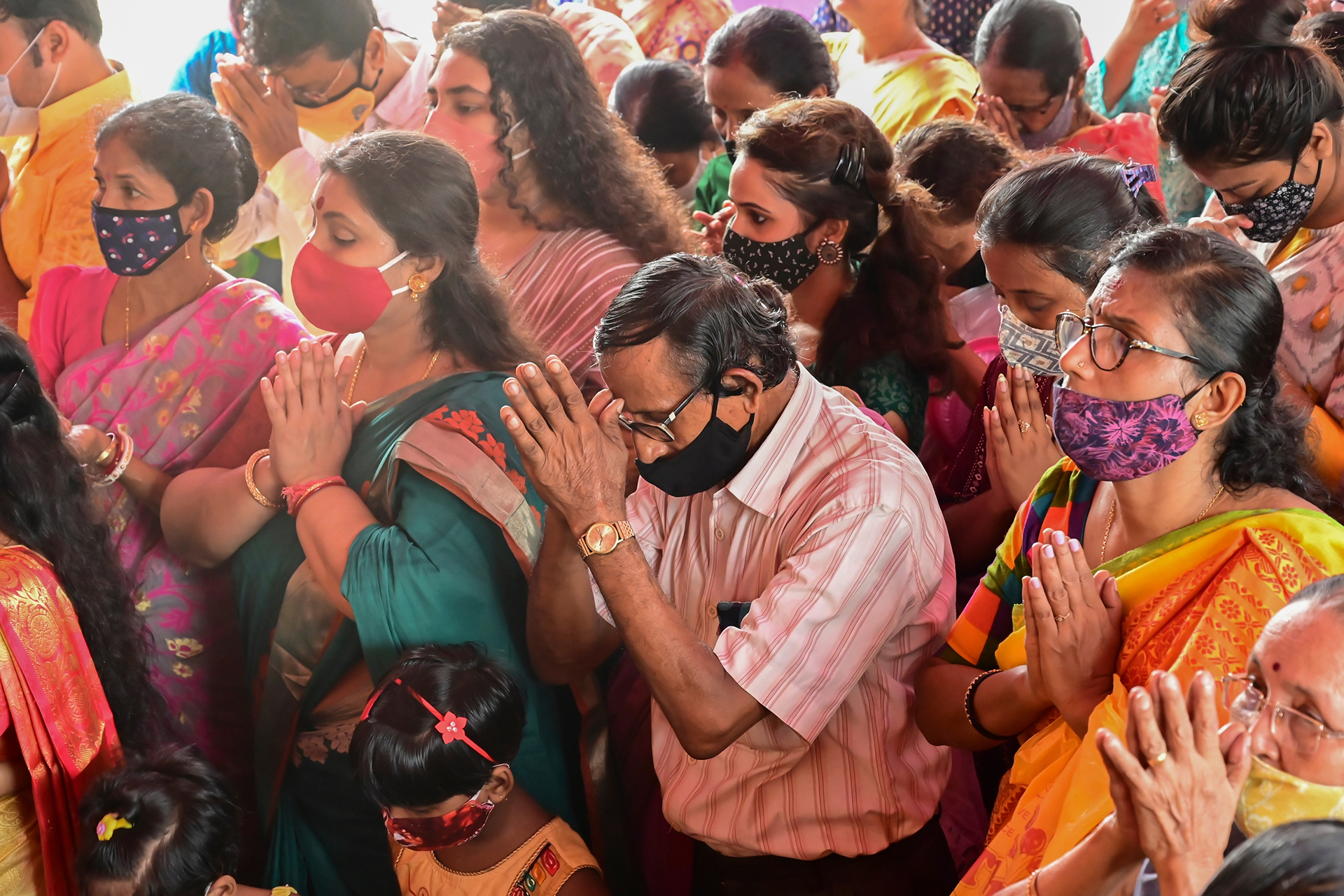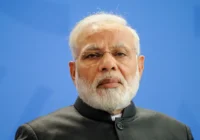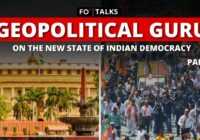100 years ago, Hindutva was coined as a political ideology by Vinayak Damodar Savarkar of the Rashtriya Swayamsevak Sangh (RSS). In 2018, the RSS chief said that unity in diversity, sacrifice, self-control, and a spirit of gratitude are its defining characteristics.
(Click here to read Part 2 and Part 3 of this three-part series.)
The RSS shapes the ideological direction of the Bharatiya Janata Party (BJP), the current party in power in India. The RSS is the world’s largest voluntary NGO with substantial grassroots appeal in India. They have been present in relief efforts during natural disasters. With over 100 affiliates, no NGO has the size, scale, and impact that RSS has. Every Hindu family (79% of the population) along with their relatives, likely has at least a few members or believers in the RSS. Hence, it plays a substantial role in the electoral outcomes of the BJP.
Evolution is Determined by Necessity
Hindutva’s emergence coincided with the ascendency of the current BJP government in 2014, now in its second term. Unlike Prime Minister Narendra Modi’s government, earlier BJP ones have failed to provide the RSS with an adequate platform to implement its agenda. In any case, practical constraints will always impact how Hindutva evolves and is executed.
Hindutva has been variously accused of fascism, pro-Brahmanism, and intolerance towards Muslims and Christians. Followers envisage the building of a Hindu state (Hindu Rashtra) and a greater, politically unified India (Akhand Bharat). Adherents are supremely proud of India’s contributions to science and culture. They regard Islam in particular, as a non-Indian faith and largely irreconcilable with its beliefs and culture. To them, Muslims are lower-caste Hindu converts who need to be brought back into the Hindu fold. The RSS was against the partition of India and they believe that Muslims (14%) should have left the country afterwards. Moreover, India should be a society created based on traditional Hindu culture and values. It pays a lot of emphasis to daily exercise and drills, and even paramilitary training, as part of mental and physical discipline. In terms of language, it sees Hindi as the rightful national language spoken by the majority of Indians.
These ideas originated before 1947. It was not until 2014 that the tenets of Hindutva found political momentum and burgeoning recognition. But by then, India had already seen 67 years of a secular democratic republic that had fashioned India as an inclusive, secular, and pluralistic society. India’s English language focus in business had made skills marketable globally and people mobile cross-border. This attracted foreign investments and pushed the country to build international credibility. Isolationism and cultural nostalgia are untenable in 2023. Hence, the Hindu-Hindi agenda must be open to the world, to technology, and to modernization.
Indian History Is Relevant to Understand Hindutva
Islamic Sultans have ruled many parts of India for nearly 1000 years, but the percentage of Muslims in South Asia is only around 30%. It clearly underscores the resilience of Hindus and Hinduism. Towards the end of the Mughal Empire, there was much intermingling of Hindu blood in the rulers. In fact, Akbar’s syncretic Din-i-Ilahi drew elements from Hinduism, Islam, and Zoroastrianism, among others. Many Diwan positions were held by high-caste Hindus as a practical necessity for the Empire.
With the support of Islamic Sufis, Sikhs (a Sufi faith with mixed Hindu-Muslim roots) helped to protect Hindus from conversion by sword under bigoted Sultans like Aurangzeb. As Sufi Bulleh Shah confirms: “I talk about today. Had Gobind Singh not been there, They would all be under Islamic sway.” Islam has spread in the hinterlands where Sufism was present, not in the capitals. The Chishti Sufi Langars (community kitchens) certainly helped and were the source of the idea for Sikh Langars adopted later by Guru Nanak.
It cannot be denied that, culturally, India is a Hindu state. With a Hindu majority of 79%, the people largely prefer reconciliation (Samjhota) and kind/soft-hearted behavior (Namrata) to conflict. Hindus have been colonized for about 1,200 years in the 5,000-plus years of civilization. If there is any land in which Hindus have the natural right to freely express their views and worship in their chosen style, it is India. If there is any land that should be the natural refuge for persecuted Hindus and Sikhs, including those from Pakistan, Afghanistan & Bangladesh, it is India.
On the other hand, Islamic Sufism, based on the teachings of Turkey’s Rumi, Imam Ali (called the Father of Sufism; 1st Imam of Shias, 4th Caliph of Sunnis), and India’s own Chishti school (includes Sikh patron saint Baba Farid), fits naturally with Hinduism. Many Hindus worship at the Dargahs of Sufi saints. The Ajmer Sharif Dargah of the revered Sufi saint, Moinuddin Chishti, is visited by thousands of Hindus daily. There was recently a 70% drop in visitors after a radical cleric delivered a series of anti-Hindu hate speeches. These numbers show the continuing draw of Sufism with Hindus.
Hindutva versus Hinduism
For Savarkar, ‘Hindutva’ refers to the ‘quality of being a Hindu’ in ethnic, cultural, and political terms. He argued that a Hindu is one who considers India to be his motherland (matribhumi), the land of his ancestors (pitrbhumi), and his holy land (punya bhumi). This includes Sikhs, Buddhists, and Jains but excludes Christians and Muslims. Savarkar asserted: “Hinduism is only a derivative, a fraction, a part of Hindutva.” His vision of Hindutva saw it as the animating principle of a Hindu nation rooted in an undivided India based on the Mauryan Empire’s coverage.
Hindutva has been described by many left-leaning commentators as having nothing to do with Hinduism. Whereas Hinduism is described as naturally inclusive, Hindutva has been described as a nationalist ideology with Nazi leanings. The best example of inclusivity is the survival of the Zoroastrian or Parsi community. They have survived in India for 1,000 years with their faith intact. In Feb 2020, the RSS chief distanced himself and said that the term nationalism alluded to Hitler, Nazism, and fascism. It does not mean the same thing in India as the “nation is built on its common sanskriti (civilization).”
Hindutva’s assertiveness can certainly be traced back to Hindu texts. Its fight against Jihadism is very much in line with the Mahabharata. Elements of Modi’s defense policy, such as the use of surgical strikes, have their roots in this single epic and the works of Kautilya’s Arthashastra as well. The Ramayana similarly stresses personal autonomy and fighting evil.
Mahatma Gandhi’s principle of ahimsa, better suited to personal relationships, pacified Hindus over the next 65 years. It led to a toothless Nehruvian defense policy until the 1962 India-China War with China. According to Babasaheb Ambedkar, the chief architect of the Indian Constitution, independence was won thanks to the efforts of the Indian National Army (mainly a Sikh regiment) led by Netaji Subhas Chandra Bose. It had nothing to do with ahimsa. The PM of England Clement Attlee is said to have confirmed this view.
The contribution of Sikhs in India’s freedom struggle is revealing: “Out of 121 patriots hanged 93 were Sikhs. Of the 2,626 awarded life-imprisonment, 2147 were Sikhs.” At just 1.5% of the population their sacrifices were 90%. We must also note that the greatest contributors to the original martial Sikh Khalsa cadres in 1699 were Hindus. They were supported by select Islamic Sufi groups, against the Mughals (Aurangzeb in particular). Yet it was only in 2018 that the RSS recognized Sikhism as a separate religion, largely for political reasons.
Hence, the idea that Hindus are both meek and passive is not borne out by history. India would be an Islamic state if meekness and passiveness were true. It’s a stereotype that suited the British Raj. Savarkar also talks of “Hindus… fed on inertia-producing thoughts… one of the causes of the continuous enslavement of our Hindu Rashtra for centuries”. The British, in fact, recruited Sikhs for their military prowess. Sikhism’s Sufi roots aside, the Sikhs were almost all Hindus in the first place. The Sikh idea of Dharam Yudh (ethical war) is very much a Hindu idea.
The RSS’s position on security is arguably influenced by the Sikh Khalsa. Its shakhas (branches for morning drills) “recite the names of great people — sons and daughters of India — right from the ancient times to modern India”, very similar to Sikh preachers who recite the names of Sikh heroes out of respect. This is reflected in the training camps for Bajrang Dal, VHP, (both spawned by RSS), and RSS activists in the hinterland (not new). In modern times it also means potentially taking law and order into one’s own hands.
Without a strict Code of Conduct like the Khalsa Sikhs who also take an oath, it is impossible to adopt a military philosophy without the presence of rogue elements at the grassroots. This has resulted in cow vigilantism and other anti-Muslim incidents in India such as the Delhi riots. These incidents cause irreparable damage to society. The RSS supremo adopts the Sikh belief of “neither threaten nor gets threatened” in his conception of self-defense. This is not likely to fully permeate the grassroots. It may also be the case that more and better-trained riot police are needed where Hindu-Muslim fault lines are known to exist. The Army should also be called out wherever a riot cannot be controlled in say 4-6 hours.
Sufism has a 1,000-year history of evolution in India. Over 50% of Indian Muslims worship at the shrines of Sufi Saints. Both Shia (13%) and Sunni (85%) have Sufi traditions. Sufism is one of several reasons keeping Indian Muslims largely out of the Islamic State. At the World Sufi Forum in March 2016, Modi made clear that the common enemy are jihadis, not Sufi Muslims.
Modi said “At a time when the dark shadows of violence are becoming longer, you are the noor or the light of hope. When young laughter is silenced by guns on the streets, you are the voice that heals.” This was followed by a February 2022 event in which Modi said: “Sufi saints are an integral part of Indian ethos and Sufism contributed significantly to the creation of a pluralistic, multicultural society in the country.” This is a welcome development which surely has the endorsement from the RSS. Interestingly, Shias, under Imam Ali, the Father of Sufism, have a history of being helped by the Hussaini Brahmins in the historic battle of Karbala.
The Modi government’s stance on triple talaq — a practice that “allows a husband to divorce his wife by repeating the word talaq (divorce) three times in any form, including email or text message — on regulating and funding Madrassas for educational quality, on promoting Islamic Sufism, on clamping down on terror groups and funding, is spot on. In fact, the Modi government has won two straight terms in Deoband in the state assembly elections, both in 2017 and 2022. Deoband has a 70% Muslim population and is the ground zero of conservative Islam in India. After all, it was established as a seminary to bring back “pure Islam” after the formal end of the Mughal Empire in 1858. The BJP’s victory in the heart of Islam in South Asia is telling.
(Click here to read Part 2 and Part 3 of this three-part series.)
[Naveed Ahsan edited this article.]
The views expressed in this article are the author’s own and do not necessarily reflect Fair Observer’s editorial policy.
Support Fair Observer
We rely on your support for our independence, diversity and quality.
For more than 10 years, Fair Observer has been free, fair and independent. No billionaire owns us, no advertisers control us. We are a reader-supported nonprofit. Unlike many other publications, we keep our content free for readers regardless of where they live or whether they can afford to pay. We have no paywalls and no ads.
In the post-truth era of fake news, echo chambers and filter bubbles, we publish a plurality of perspectives from around the world. Anyone can publish with us, but everyone goes through a rigorous editorial process. So, you get fact-checked, well-reasoned content instead of noise.
We publish 2,500+ voices from 90+ countries. We also conduct education and training programs
on subjects ranging from digital media and journalism to writing and critical thinking. This
doesn’t come cheap. Servers, editors, trainers and web developers cost
money.
Please consider supporting us on a regular basis as a recurring donor or a
sustaining member.
Will you support FO’s journalism?
We rely on your support for our independence, diversity and quality.






